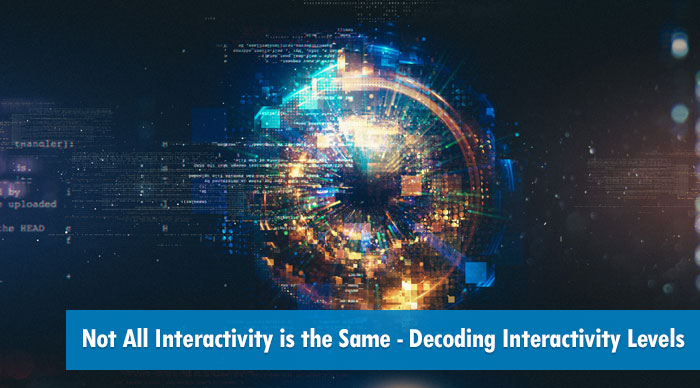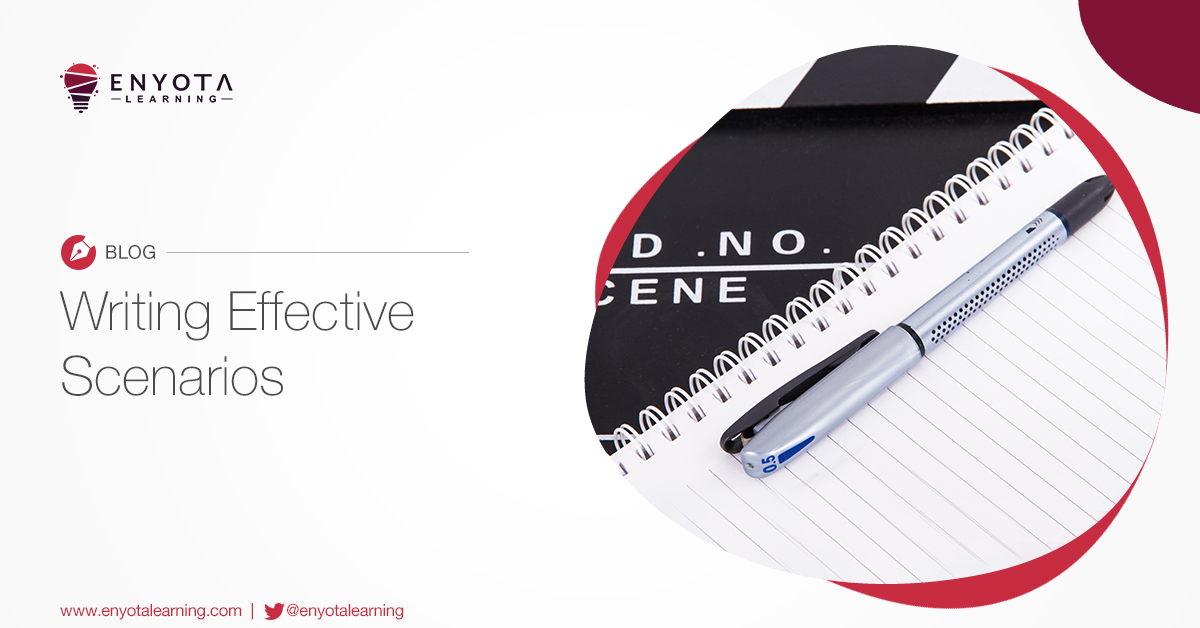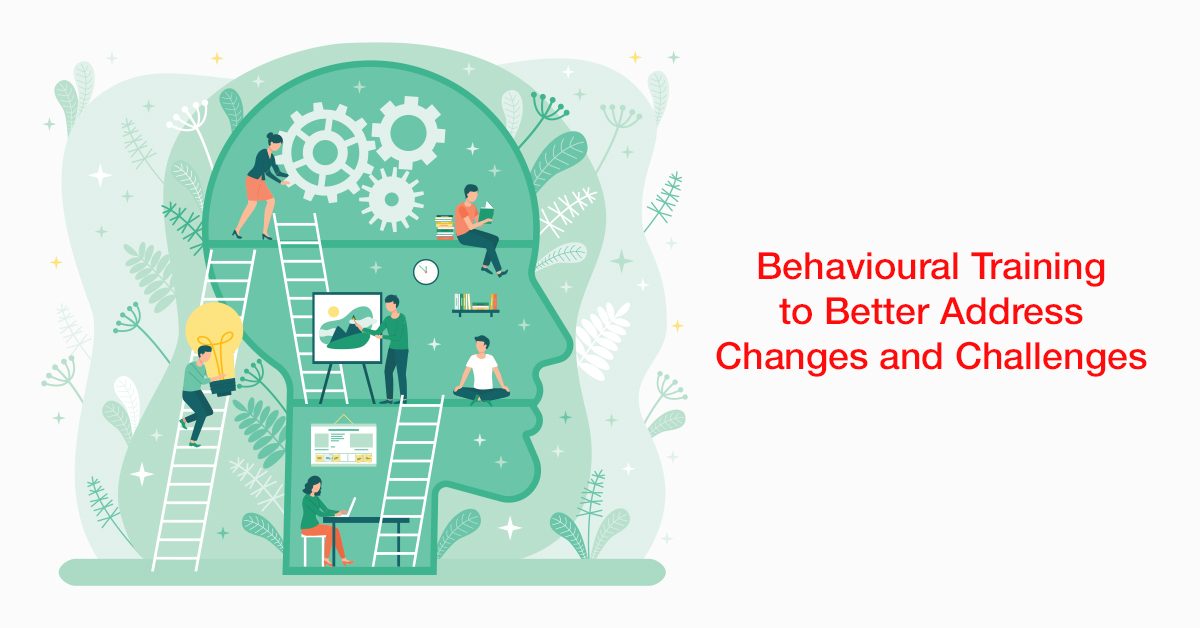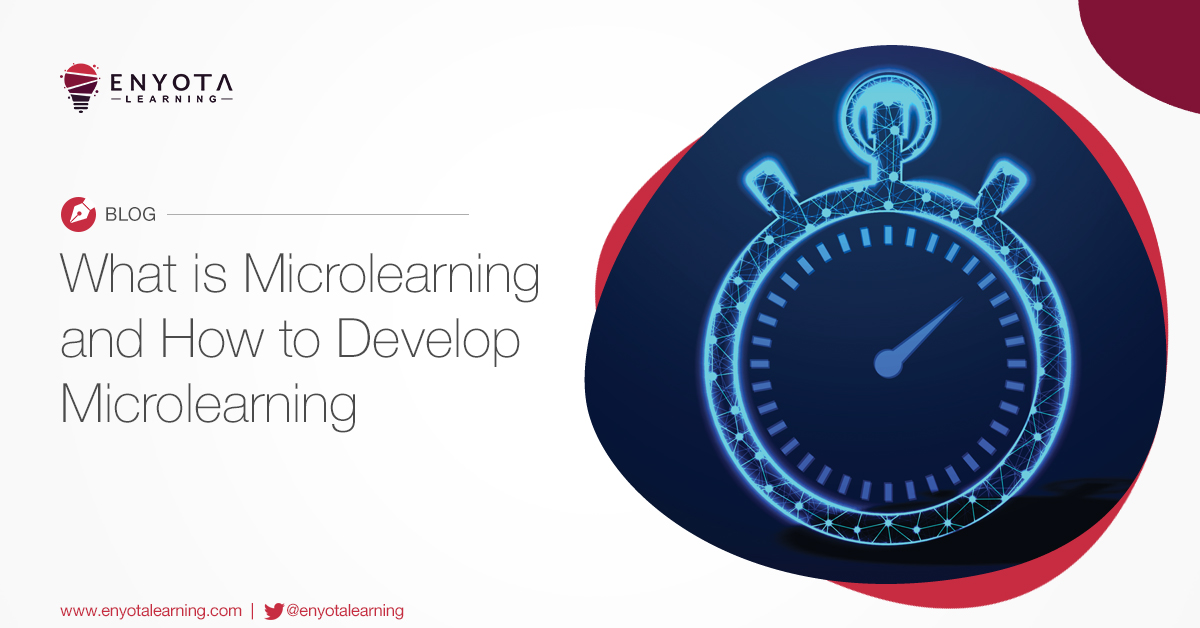
What this article covers:
-
Why use interactivity in eLearning?
-
Levels of eLearning interactivity
-
Our services in the domain of interactive eLearning development
Why Use Interactivity?
The objective of using interactive elements is to facilitate learning, best explain the topic to the learner, and keep the learner actively engaged. Several studies show that the use of interactive elements improve learning outcomes and facilitate better retention of the learning objects.
Interactivity in eLearning can extend from simple click-to-reveal kind of actions, to creating situations and scenario reproductions, and creating decision tests. With the use of interactive elements such as gamification, multimedia, video, simulations, digital avatars, virtual reality etc. the learner can develop a deeper comprehension of the subject via a protected, experimentation-like environment.
However, not all interactivity levels are created equal. Organizations must apply interactivity levels in their eLearning programs according to the nature of the content, the technological infrastructure and environment, the desired outcomes, the target audience, and the budget.
The level of interaction is the metric that refers to concepts such as learning complexity, user interaction levels, and sophistication level of the eLearning course.
Interactivity in eLearning is broken down into the following levels:
Level 1
Low-Level Interactivity/Page Turners
Level 1 or Page Turners is a very basic level of interactivity.
Here, the learner watches a video or recording or receives the text on the screen with minimal media use. Media used here is in the form of photographs or icons. While the learner has minimal control of the learning environment as the level of interactions here are quite passive, this level of interactivity is still better than PowerPoint presentations since the content is broken down into smaller, bite-sized pieces, and each section could be followed by a basic assessment.
Video provided by the client can also be cropped and embedded in this level and may or may not use audio. If audio is used, then it is used verbatim.
This level of interactivity can be used effectively if the aim is to build awareness, is procedural in nature, or when the learners just need a ‘show me how to” kind of a presentation.
Level 2
Medium to High Interactivity (Audio-Driven)
In this level, the learner is allowed more control, thus making this level the most favored approach to delivering eLearning. The use of animations, graphics (like photographs, icons, and infographics), and interactivities such as click-to-reveal activities like clickable tabs, icons, infographics, etc., roll-overs can be found in this level. This level can also employ audio and video elements such as introductory videos and product demonstrations for better learning. In this level, interactive elements appear at regular intervals, say every 5 screens.
In this level, the learner must demonstrate the knowledge acquired from the content as the emphasis is on application objectives, icons, infographics, etc., roll-overs can be found in this level. This level is more audio-driven where the learner does a little more than just watch, read or navigate the learning material here and can associate with the learning conditions through “problem areas” employing interactive assets such as movement, sight, and sound.
The navigation in this interactivity level expands to glossaries and links to external resources, and often has exercises such as quizzes, identification components, drag and drop, matching, etc.
This level of interactivity is apt for eLearning situations that are focused on on-the-job-performance improvements such as process and product training and skill development, rather than just knowledge transfer. Because of the more media and audio-driven approach taken, content overload is not a concern and the learner can take in digestible chunks of information, at their own pace.
Level 3
Medium to High Interaction Using Conversation/Stories/Games/Branching, etc.
Higher interactions are best suited for courses that have a moderately high degree of complexity, demand active learning due to the multiple inter-related concepts, and multidimensional problems that require authentic representation, and advanced practice. Graphics, animations, custom illustrations (characters or backgrounds relevant to the story or theme being used), and gamified quizzes are employed at this level. This learning method could also use multiple paths or branching to enable active learning. The learner has a higher degree of control over the course environment.
The content is presented in the context of real business problems and employs audio, videos, and simulated environments with interactivity appearing more regularly, say on every 3rd screen. The content also has a flexible or customized navigation structure and employs more complex and narrated animations.
There are more complex practice opportunities by using custom animations that test the learner’s investigative capabilities. This method is best suited for training on problem-solving capabilities such as performing financial calculations, introducing menu-driven applications or new software environments etc. This learning method also provides a ‘safe’ environment to learners as they can learn the impact of their decisions in a simulated environment. The emphasis is on application, knowledge transfers and retention. The learner here must make complex decisions and in case of poor performance, they receive immediate remediation.
Level 4
Advanced Interactivity (Videos/explainers)
This level employs a high level of instructional and visual design, using an animated explainer or video-type approach. Simulations, high-impact graphics, complex animations, highly recharged interactivities, self-checks and practice sessions with a higher degree of sophistication. This level employs a story line with characters and may also have interactive elements.
The creation of personalized or dynamic environments using real-life scenarios and digital avatars to teach complex theories or concepts with a professional run-through enable better comprehension and deliver a better learning impact. This approach works great for presenting how-to videos, product demonstrations, change management, story-telling, etc.
This level of eLearning is a good learning option when the objective of the course is to help learners understand complex and multifaceted business problems or teach them high-level or advanced decision-making skills, or even to bring about in change in attitude and behavior. Live recordings of customer interactions, for example, can be used to training customer-facing teams where they get to see an actual or simulated interaction, thus helping them up their skills in a faster more relatable set-up.
Level 1 and Level 2 interactivity is well suited for training that needs frequent updating such as new hire orientations or company policies. It is also great for larger training programs where budgets might also be a constraint.
It is to help learners understand complex and multifaceted business problems or teach them high-level or advanced decision-making skills, or even to bring about a change in attitude and behavior. Live recordings of customer interactions, for example, can be used to training customer-facing teams where they get to see an actual or simulated interaction, thus helping them up their skills in a faster more relatable set-up.
Level 3 and 4 are ideal for situations where the learners need to be motivated to take the course, if they need to improve productivity, and where their actions have a direct business impact. Evaluating the technical environment such as bandwidth, software etc. is essential for employing Level 3 and 4 interactivities.
When it comes to interactivity, sometimes less can be more and vice versa. The learning objectives and the desired outcomes must drive the level of interactivity your course needs. Consider your learner personas, their level of comfort with online training, their job requirements, and of course, your budgets and business needs, before applying a certain instructional and visual design strategy. Consult a Learning Solutions Specialist to help you define what is the best approach you need to take.
At eNyota we strive to deliver the best experience your learners can get. Our interactive courses are based on the levels mentioned above and are designed and created to provide an optimal level of learner engagement and completion rates. If you’re interested in knowing more about the next course you want to build and how it can be achieved, reach out to us by filling a contact form and one of our representatives will reach out to you.





